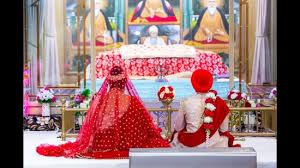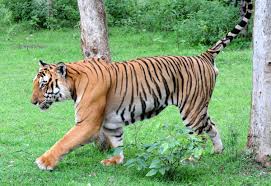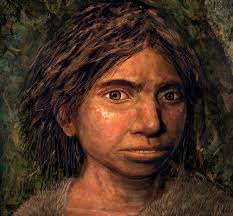Today’s Current Affairs: 10th July 2024 for UPSC IAS exams, State PSC exams, SSC CGL, State SSC, RRB, Railways, Banking Exam & IBPS, etc
Table of Contents
Russia’s Highest Sivilian Honour : Prime Minister Sri Narendra Modi

The Prime Minister was awarded Russia’s highest civilian honour, the Order of Saint Andrew the Apostle, during his visit to the country.
- Order of Saint Andrew the Apostle award is given to prominent government and public figures, military leaders, and outstanding representatives of science, culture, art, and various sectors of the economy for exceptional services to Russia.
- Tsar Peter the Great (1672–1725) established the Order of Saint Andrew in 1698.
- It can also be awarded to heads of foreign states for outstanding services to the Russian Federation.
- Its name comes from Saint Andrew, who is believed to be one of the apostles or 12 original followers of Jesus. After Christ’s crucifixion, the apostles are said to have travelled great distances to spread his message.
- The award consists of
- The chain of the Order consists of 17 alternating links and features a gilded image of the State Emblem of the Russian Federation, a double-headed eagle.
- It also includes a badge, a star, and a light blue silk moire ribbon. For those recognised for distinction in combat, the badge and star are adorned with swords.
Regenerative Braking:

Regenerative braking is a system designed to convert the kinetic energy of the wheels to a form that can be stored and used for other purposes.
- Regenerative Braking is a mechanism found on most hybrid and full-electric vehicles.
- It is also called a kinetic energy recovery system.
- It captures the kinetic energy from braking and converts it into the electrical power that charges the vehicle’s high-voltage battery.
- It also slows the car down, which assists the use of traditional brakes.
- Electric motors, when used in reverse, function as generators and will then convert mechanical energy into electrical energy. Vehicles propelled by electric motors use them as generators when using regenerative braking, braking by transferring mechanical energy from the wheels to an electrical load.
- With regenerative braking, the energy from your spinning wheels is used to reverse the direction of electricity – from the electric motors to the battery.
- The electric motor not only acts as an electric generator, but it also helps slow your car down because energy is consumed by the wheels as they rotate the shaft in the electric motor.
- It can improve fuel consumption and reduce the overall braking load taken on by the vehicle’s friction brakes, reducing the wear on the brake pads.
Naavu Manujaru Programme:

The Karnataka government has ordered the implementation of ‘Naavu Manujaru’ programme from this academic year.
- Naavu Manujaru’ Programme is to improve the capacity of the students to think independently and rationality and understand the pros and cons of every issue.
- It will also be helpful for the overall development of the students.
- It is implemented in all government, aided and unaided primary and high schools of the State.
- Implementation of this programme would involve discussions and dialogues for two hours per week
- It involves discussion on social harmony and its significance, based on local and national festivals, folk games, sports
- The discussion also includes thoughts of social reformers, visiting and sharing information on outbound/local famous places, cottage industries, discussion on nuclear and non-nuclear families, discussion on elimination of inequality and dialogue on constitutional values like equality, liberty and fraternity etc.
- The Department of State Educational Research and Training (DSERT) is the implementation authority of this programme.
CubeSat Radio Interferometry Experiment:

NASA is set to launch a groundbreaking CubeSat Radio Interferometry Experiment (CURIE) mission to unravel the mysteries of solar radio waves.
- CubeSat Radio Interferometry Experiment (CURIE) aims to investigate the enigmatic origins of radio waves emanating from the Sun, a phenomenon first observed decades ago.
- The mission employs an innovative technique called low-frequency radio interferometry, marking its first use in space.
- CURIE consists of two miniature spacecraft, collectively no larger than a shoebox, which will orbit Earth approximately two miles apart.
- This separation enables the instruments to detect minute differences in radio wave arrival times, pinpointing their exact solar origin.
- This spacecraft will measure radio waves in the 0.1 to 19 megahertz range, frequencies blocked by Earth’s upper atmosphere, necessitating space-based observations.
- CURIE will orbit 360 miles above Earth’s surface to obtain an unobstructed view of the Sun’s radio emissions.
- Once in orbit, the two CURIE spacecraft will separate, deploy their eight-foot antennas, and begin collecting data.
- This mission not only promises to advance our understanding of solar phenomena but also paves the way for future space-based radio astronomy endeavors
Anand Marriage Act:

The National Commission for Minorities held a meeting under the chairmanship of the Chairman, National Commission for Minorities, with 18 States/UTs to discuss the implementation and registration of marriages of Sikhs under Anand Marriage Act.
- Anand Marriage Act provides statutory recognition of marriage rituals of the Sikh community in India.
- The emergence of the Anand Marriage Act dates back to 1909 when the British Imperial Legislative Council passed legislation for the recognition of the Sikh wedding ceremony Anand Karaj.
- The Act aimed to acknowledge and respect the customs and practices of the community.
- In 2012, the Parliament passed the Anand Marriage (Amendment) Bill, bringing Sikh traditional marriages under the purview of legal recognition.
- While the central government approved the amendments, it was left for individual states and union territories to frame respective rules for the registration of Anand marriages.
- It provides statutory recognition to marriage rituals of Sikhs, fulfilling their long-standing demand to not have to solemnise their marriages under the Hindu Marriage Act.
- ‘Jammu and Kashmir Anand Marriage Registration Rules, 2023’ has been framed for the registration of “Anand marriages”, under which tehsildars concerned shall be the registrar of such marriages within their respective territorial jurisdiction, as per a government notification issued.
Veerangana Durgavati Tiger Reserve : In News

The Madhya Pradesh government has initiated an inquiry into the alleged poaching of tigers and irregularities in the newly established Veerangana Durgavati Tiger Reserve.
- Veerangana Durgavati Tiger Reserve is spread across Sagar, Damoh and Narsinghpur districts of Madhya Pradesh.
- Covering an expansive area of 2,339 square kilometres, it encompasses areas within the Nauradehi Wildlife Sanctuary and Durgavati Wildlife Sanctuary.
- It is the seventh tiger reserve in Madhya Pradesh.
- It is named for Rani Durgavati, the queen of the Gondi people.
- The reserve also boasts a diverse landscape, with hills, valleys, rivers, streams, waterfalls, and grasslands.
- It straddles parts of the Narmada and Yamuna River basins.
- The Singorgarh Fort is located within the reserve.
- It is one of the few remaining strongholds for the White-Rumped and the Indian Vultures, critically endangered raptors of India.
- A green corridor linking Panna Tiger Reserve (PTR) with Durgavati will be developed for the natural movement of the tiger to the new reserve.
Denisovans : Study

Denisovans survived and thrived on the high-altitude Tibetan plateau for more than 100,000 years, according to a new study.
- Denisovans are an extinct species of hominid and a close relative to modern humans.
- They’re a recent addition to the human family tree—scientists first identified Denisovan remains from a cave in Siberia in 2010.
- They lived across a wide range of areas and conditions, from the cold mountains of Siberia and Tibet to the jungles of Southeast Asia during the last Ice Age.
- Time Period: 500,000 to 30,000 years ago
- DNA evidence suggests Denisovans are related to both Neanderthalsand modern humans, and may have interbred with both.
- Denisovans share a common ancestor with both modern humans and Neanderthals.
- This common ancestor, called Homo heidelbergensis, most likely lived in Africa.
- Denisovans may have had dark skin, dark hair and dark eyes.
- The Denisovan genome appears to have low genetic diversity, which means their population may never have been very large.
Equity Mutual Funds:

Inflows into India’s equity mutual funds rose 17% sequentially to a record high of Rs 40,608 crore in June, data from the Association of Mutual Funds in India (AMFI) showed recently.
- Equity Mutual Funds is a type of investment fund that pools money from investors to trade primarily a portfolio of stocks, also known as equity securities.
- They are also known as Growth Funds.
- Equity Funds are either Active or Passive.
- In an Active Fund, a fund managerscans the market, conducts research on companies, examines performance and looks for the best stocks to invest.
- In a Passive Fund, the fund manager builds a portfolio that mirrors a popular market index, say Sensex or Nifty Fifty.
- The fund manager has a passive role in stock selection.
- Buy, hold, or sell decisions aredriven by the benchmark index, and the fund manager merely needs to replicate the same with minimal tracking error.
- Equity Funds can also be divided as per Market Capitalisation, i.e., how much the capital market values an entire company’s equity.
- There can be Large Cap, Mid Cap, Small or Micro Cap Funds.
- There can be a further classification as Diversified or Sectoral / Thematic.
- In the former, the scheme invests in stocks across the entire market spectrum, while in the latter, it is restricted to only a particular sector or theme, say, Infotech or Infrastructure.




